- Sorry, this product is unavailable.
-
 A fabulous chunk of Australiana in this wide selection of anecdotes compiled by John Laws and Christopher Stewart that ranges through Australia's history: from the First Fleet to the rock 'n' roll of the 1950s, these are fascinating stories that detail the people and events that helped shape the Australian legend. There's heroism, perseverance, strange coincidences genius, tragedy and warfare. And with every tale, no matter how well-known - there was always a little more to it.
A fabulous chunk of Australiana in this wide selection of anecdotes compiled by John Laws and Christopher Stewart that ranges through Australia's history: from the First Fleet to the rock 'n' roll of the 1950s, these are fascinating stories that detail the people and events that helped shape the Australian legend. There's heroism, perseverance, strange coincidences genius, tragedy and warfare. And with every tale, no matter how well-known - there was always a little more to it. -

The clients of the Skeldale House vet. practice vary from dour farmers who expect miracles for nothing, those grateful for any little service and for James Herriot, the real five star owners and patients like Mrs. Pumphrey and Tricki Woo. Here are animal characters from cart horses to kittens; a dog whose staple diet is fish and chips, a cat who presides over his master's business and cows and ewes with complicated calvings and lambings. Siegfried and James are compelled to take on assistants, one of whom - Calum Buchanan - has a larger than life personality with a magical touch, and a menagerie of his own that includes badgers, dogs, owls and foxcubs who take up residence in the kitchen. James' wife Helen is there, steering him through the often comic crises with serene practicality, as well as his children Jimmy and Rosie, both determined to follow in their father's footsteps. A book for anyone who loves animals and laughter. Illustrated by Victor Ambrus.
-
 It takes more than a fit of the vapours for a giant airline to ground a multimillion-dollar jumbo jet. What investigative writer John Fuller stumbled upon was a jet-age ghost story – crews refused to fly the plane because of the recurring apparitions of a dead pilot and flight engineer from a crashed sister ship. It was the famed Lockheed Tristar; the first jumbo jet ever to crash, in the Florida Everglades, with the loss of 101 persons. In his investigation, Fuller is led inexorably to repeated eyewitness experiences of the dead men’s reappearances before flight crews. After a classic reconstruction of the mysterious crash itself, he interviews scores of airline flight personnel and explores every facet of every “ghost” report. A confirmed skeptic who has always written with professional thoroughness on both scientific and life subjects, Fuller uncovers startling evidence of contact with the spirit of the dead flight engineer Don Repo. It is a spine-tingling, persuasive account with implications of spiritual realities that are of increasing interest in today’s world of ever more extraordinary scientific breakthroughs.
It takes more than a fit of the vapours for a giant airline to ground a multimillion-dollar jumbo jet. What investigative writer John Fuller stumbled upon was a jet-age ghost story – crews refused to fly the plane because of the recurring apparitions of a dead pilot and flight engineer from a crashed sister ship. It was the famed Lockheed Tristar; the first jumbo jet ever to crash, in the Florida Everglades, with the loss of 101 persons. In his investigation, Fuller is led inexorably to repeated eyewitness experiences of the dead men’s reappearances before flight crews. After a classic reconstruction of the mysterious crash itself, he interviews scores of airline flight personnel and explores every facet of every “ghost” report. A confirmed skeptic who has always written with professional thoroughness on both scientific and life subjects, Fuller uncovers startling evidence of contact with the spirit of the dead flight engineer Don Repo. It is a spine-tingling, persuasive account with implications of spiritual realities that are of increasing interest in today’s world of ever more extraordinary scientific breakthroughs. -
 Into the hard-living world of travelling shearers in the Australian outback comes internationally acclaimed writer Roger McDonald, driving an old truck rattling with cooking gear. He has abandoned writing for a time and found work as a cook for a team of New Zealand shearers working through New South Wales, South Australia and Victoria. He is determined to find a sense of belonging: somehow to join his life with the landscape, the places and the people he meets along the way; somehow to fill the inexpressible yearning he feels. This is the story of that quest, of its triumphs and its failures - a story told with a heartfelt sense of of the profundity of ordinary lives. Written with an insider's affection and familiarity sharpened by an outsider's perception, this moving account of working life in a classic Australian industry gives a new twist to a long tradition of outback travel writing.
Into the hard-living world of travelling shearers in the Australian outback comes internationally acclaimed writer Roger McDonald, driving an old truck rattling with cooking gear. He has abandoned writing for a time and found work as a cook for a team of New Zealand shearers working through New South Wales, South Australia and Victoria. He is determined to find a sense of belonging: somehow to join his life with the landscape, the places and the people he meets along the way; somehow to fill the inexpressible yearning he feels. This is the story of that quest, of its triumphs and its failures - a story told with a heartfelt sense of of the profundity of ordinary lives. Written with an insider's affection and familiarity sharpened by an outsider's perception, this moving account of working life in a classic Australian industry gives a new twist to a long tradition of outback travel writing. -
 Augustus and his brothers Francis and Henry left Yule's Station (60 miles north-east of Perth) on August 7, 1846 with four horses and seven weeks' provisions and explored a considerable amount of the country north of Perth. The party returned after 47 days, having covered 953 miles. Two years later there was an expedition to examine the course of the Gascoyne River in order to find good pasture land; further explorations followed during his time as Assistant Surveyor of Western Australia. In 1857 he also led a party in a search for traces of Ludwig Leichhardt, a fellow explorer who had disappeared. Both Augustus and his brother were presented with gold medals by the Royal Geographical Society. This facsimile reprint of the 1884 original is a fascinating diary of their adventures and explorations.
Augustus and his brothers Francis and Henry left Yule's Station (60 miles north-east of Perth) on August 7, 1846 with four horses and seven weeks' provisions and explored a considerable amount of the country north of Perth. The party returned after 47 days, having covered 953 miles. Two years later there was an expedition to examine the course of the Gascoyne River in order to find good pasture land; further explorations followed during his time as Assistant Surveyor of Western Australia. In 1857 he also led a party in a search for traces of Ludwig Leichhardt, a fellow explorer who had disappeared. Both Augustus and his brother were presented with gold medals by the Royal Geographical Society. This facsimile reprint of the 1884 original is a fascinating diary of their adventures and explorations. -
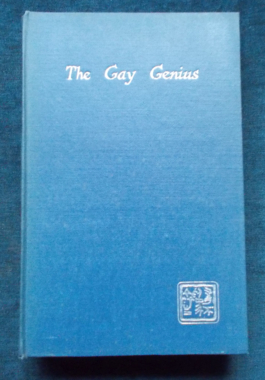

The Gay Genius: Lin Yutang
$65.00The biography of Su Tungpo, the celebrated and famous philosopher, poet, artist, government official and gourmand of 10th century China. He was a product of a centuries-old social system - a member of the literati. Taught to absorb the classics of Chinese literature at a young age, he rose to prominence by his remarkable performance at the national examinations, the entry point into a life of participation in the upper levels of the Chinese government. He was outspoken in his criticism of corrupt practices of government officials. From the book: ...an incorrigible optimist, a great humanitarian, a friend of the people, a prose master, an original painter, a great calligraphist, an experimenter in wine making, an engineer, a hater of puritanism, a yogi, a Buddhist believer, a Confucian statesman, a secretary to the emperor, a confirmed winebibber, a humane judge, a dissenter in politics, a prowler in the moonlight, a poet, and a wag. He sounds like someone we'd all love to know. Illustrated with black and white photographs of truly beautiful Chinese art of the period.
-
 This book deals with the many facets of fire control and fire behaviour and is written particularly for the great army of volunteer bushfire brigade members, without whom rural fire control in this country would be in a sorry state. Although it draws on some 30 - 40 years of Australian fire research experience, it is written in simple terms for ready absorption of the information contained therein. The chapter written on safety and survival was written by a medical man who is an active member of a volunteer fire brigade. There are sections on combustion, fuel, fire behaviour and fire effects as well as legislation, organisation and suppression problems unique to each State and Territory. Illustrated with colour and black and white photographs.
This book deals with the many facets of fire control and fire behaviour and is written particularly for the great army of volunteer bushfire brigade members, without whom rural fire control in this country would be in a sorry state. Although it draws on some 30 - 40 years of Australian fire research experience, it is written in simple terms for ready absorption of the information contained therein. The chapter written on safety and survival was written by a medical man who is an active member of a volunteer fire brigade. There are sections on combustion, fuel, fire behaviour and fire effects as well as legislation, organisation and suppression problems unique to each State and Territory. Illustrated with colour and black and white photographs. -

The Great Fletch: Hugh Lunn
$30.00When a passing French tennis superstar gave the young Ken Fletcher his tennis racquet, he didn't know what he'd started. Ken, a lonely only child with an irrepressible spirit, took the racquet, which was far too too big for him, tucked its handle under his armpit and began to bang the ball against a board in this back garden, using his whole body to get behind the ball. The result was a perfect, stunning forehand. Annersley Junction was more than a bit surprised when young Ken was seeded Number 3 at Wimbledon and won a Grand Slam with that forehand, used to devastating effect. Ken went on to lead a life of dazzling glamour: casinos,chauffeur-driven cars, beautiful women and applauding crowds. Hugh Lunn explores how a boy from Annesley Junction turned into a champion tennis player, and with his trademark humour and style he not only brings us the life of a sporting great, he describes a picture of a more innocent time in Australian history. -

Whole Life: Morris Lurie
$10.00Morris Lurie, author, wrote more than twenty books including Flying Home, which was selected by the National Book Council as one of the ten best Australian books of the decade. His Twenty-Seventh Annual African Hippopotamus Race was voted by the schoolchildren of Victoria as their favourite story book by an Australian author. -

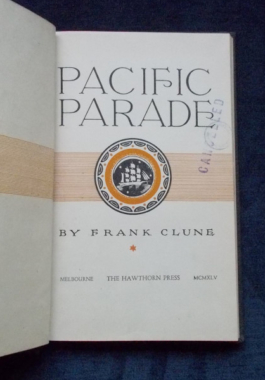
Pacific Parade: Frank Clune
$12.00Frank Clune saw World War II as a turning point in Australia’s consciousness, turning its inhabitants’ attention to the Pacific region. This is his series of short sketches based on his travels: hitching a ride home on a sailing ship from Vancouver; seeing a giant turtle tow a dinghy madly about a bay as if it were a toy; the escape of convict William Bryant and his wife Mary in an open boat from Botany Bay to Koepang, in 1791; the slaughter of the crew of the brig Stedcombe - and many more tales of historic interest. -
 Never before had royal authority been so fundamentally challenged. Eight centuries later, 63 clauses of the original Magna Carta are still in use. But this is not a dry treatise of this well-covered historical event: it is also what it was like to live in that momentous year. Fashion, food, religion, sex, education and medicine...Spectacles were invented...windmills were erected...Oxford became the first university and the cathedrals of Lincoln and Salisbury were built. Full of rich detail, from great matters of state to everyday domestic life.
Never before had royal authority been so fundamentally challenged. Eight centuries later, 63 clauses of the original Magna Carta are still in use. But this is not a dry treatise of this well-covered historical event: it is also what it was like to live in that momentous year. Fashion, food, religion, sex, education and medicine...Spectacles were invented...windmills were erected...Oxford became the first university and the cathedrals of Lincoln and Salisbury were built. Full of rich detail, from great matters of state to everyday domestic life. -
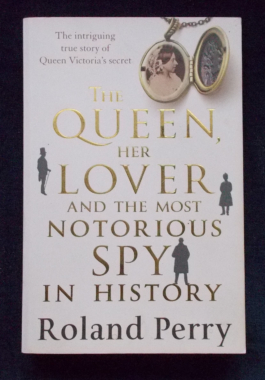 Long before her successful marriage to Prince Albert, Princess Victoria had a passionate affair with a dashing Scotsman. The 13th Lord Elphinstone was a trusted member of her uncle King William IV's household and a nobleman - but despite his impressive pedigree, Elhinstone was neither German nor royal, prerequisites for the 15 year old princess's ambitious mother, the Duchess of Kent. As the revelations of Victoria's out of wedlock affair (and the rumoured child that the union produced) would have threatened her reign, attempts were made to bury the matter forever. Elphinstone was appointed Governor of Madras and effectively banished to India. The young princess never forgot her first love; she pined for five years before giving in to her mother and marrying Prince Albert of Saxe-Coburg. Successive generations of Royals kept Victoria's secret, aware that the Queen;s correspondence with her cherished first-born 'Vicky' (the Princess Royal) revealed all and lay like a ticking time bomb in a German castle attic In 1945, Victoria's great-grandson King George IV sent Royal favourite (and MI5 operative) Anthony Blunt on seven special missions to recover the letters. But Blunt was one of history's successful double agents; before returning the letters to Buckingham Palace he microfilmed the most controversial missives and passed them on to the KGB. Perry learnt of Blunt's actions while interviewing two ex-KGB master spies in Moscow in the 1990s.His mission to uncover the story of Victoria's first love saw him spending months combing through more than 300 heavily edited files in the British Library, piecing together the truth of Victoria's secret for the first time. Here is a surprising true story of passion, long-buried secrets and international espionage. With balck and white and colour photographs.
Long before her successful marriage to Prince Albert, Princess Victoria had a passionate affair with a dashing Scotsman. The 13th Lord Elphinstone was a trusted member of her uncle King William IV's household and a nobleman - but despite his impressive pedigree, Elhinstone was neither German nor royal, prerequisites for the 15 year old princess's ambitious mother, the Duchess of Kent. As the revelations of Victoria's out of wedlock affair (and the rumoured child that the union produced) would have threatened her reign, attempts were made to bury the matter forever. Elphinstone was appointed Governor of Madras and effectively banished to India. The young princess never forgot her first love; she pined for five years before giving in to her mother and marrying Prince Albert of Saxe-Coburg. Successive generations of Royals kept Victoria's secret, aware that the Queen;s correspondence with her cherished first-born 'Vicky' (the Princess Royal) revealed all and lay like a ticking time bomb in a German castle attic In 1945, Victoria's great-grandson King George IV sent Royal favourite (and MI5 operative) Anthony Blunt on seven special missions to recover the letters. But Blunt was one of history's successful double agents; before returning the letters to Buckingham Palace he microfilmed the most controversial missives and passed them on to the KGB. Perry learnt of Blunt's actions while interviewing two ex-KGB master spies in Moscow in the 1990s.His mission to uncover the story of Victoria's first love saw him spending months combing through more than 300 heavily edited files in the British Library, piecing together the truth of Victoria's secret for the first time. Here is a surprising true story of passion, long-buried secrets and international espionage. With balck and white and colour photographs. -
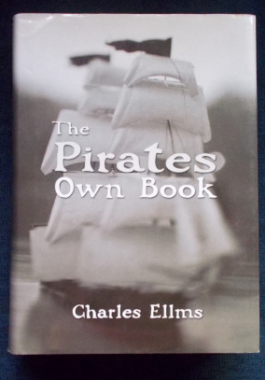 Originally published in 1837, here are the 'Authentic Narratives of the Most Celebrated Sea Robbers' - pirates! True stories of the diabolical desperadoes who plundered ships on the high seas and murdered their passengers and crews. The stories - based on contemporary newspaper accounts, trial proceedings and Admiralty records - describe in lurid detail the life, atrocities and bloody death of the infamous Black Beard as well as the cold-blooded exploits of Jean Lafitte, Robert Kidd, Edward Low, Thomas White, Anne Bonney, Mary Read and scores of other maritime marauders. For those interested in the true-life adventures of the ruthless men and women who sailed under the black flag so long ago. With illustrations reproduced from the original edition.
Originally published in 1837, here are the 'Authentic Narratives of the Most Celebrated Sea Robbers' - pirates! True stories of the diabolical desperadoes who plundered ships on the high seas and murdered their passengers and crews. The stories - based on contemporary newspaper accounts, trial proceedings and Admiralty records - describe in lurid detail the life, atrocities and bloody death of the infamous Black Beard as well as the cold-blooded exploits of Jean Lafitte, Robert Kidd, Edward Low, Thomas White, Anne Bonney, Mary Read and scores of other maritime marauders. For those interested in the true-life adventures of the ruthless men and women who sailed under the black flag so long ago. With illustrations reproduced from the original edition. -
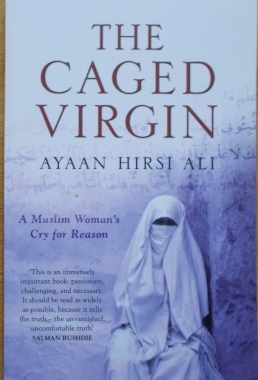 Born in Somali and raised a Muslim but outraged by her religion's hostility toward women, Ayaan escaped an arranged marriage and fled to the Netherlands. There, she learned Dutch, earned a degree and began a career in Dutch politics. In November 2004, the violent murder of Theo Van Gogh, with whom she had written a film about women and Island called Submission, changed her life. Threatened by the same group that killed Van Gogh, she has around the clock protection but has not allowed that to compromise her fierce criticism of the treatment of Muslin women, of Islamic government attempts to silence any questioning of their traditions and of Western governments' blind tolerance of practices in their countries such as genital mutilation and forced marriage of female minors.
Born in Somali and raised a Muslim but outraged by her religion's hostility toward women, Ayaan escaped an arranged marriage and fled to the Netherlands. There, she learned Dutch, earned a degree and began a career in Dutch politics. In November 2004, the violent murder of Theo Van Gogh, with whom she had written a film about women and Island called Submission, changed her life. Threatened by the same group that killed Van Gogh, she has around the clock protection but has not allowed that to compromise her fierce criticism of the treatment of Muslin women, of Islamic government attempts to silence any questioning of their traditions and of Western governments' blind tolerance of practices in their countries such as genital mutilation and forced marriage of female minors. -
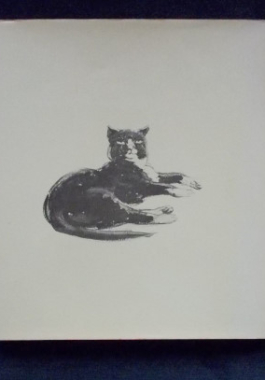
 Norman Lindsay kept a small warm corner of his long artistic life for his cats. He not only collected them and kept a horde of them in the stables and sheds, the gardens, bush and architectural nooks of Springwood - allowing the occasional prince to share the master's studio - but he drew them with humour and delightful observation. While The Magic Pudding made Lindsay's kookaburras famous, this other small anabranch of his art meandered own without public scrutiny amid the controversy, furor and celebration of his paintings and pen drawings. Some of the collection presented here were done with quick delight over the behaviour of one of his Springwood friends, others were drawn as cartoons for The Lone Hand or The Bulletin and others were done as Christmas cards or jokes. They all express the pleasure and delight his feline friends gave him. His long time friend, poet and author Douglas Stewart, introduces the drawings with an affectionate memoir of Lindsay and his cats.
Norman Lindsay kept a small warm corner of his long artistic life for his cats. He not only collected them and kept a horde of them in the stables and sheds, the gardens, bush and architectural nooks of Springwood - allowing the occasional prince to share the master's studio - but he drew them with humour and delightful observation. While The Magic Pudding made Lindsay's kookaburras famous, this other small anabranch of his art meandered own without public scrutiny amid the controversy, furor and celebration of his paintings and pen drawings. Some of the collection presented here were done with quick delight over the behaviour of one of his Springwood friends, others were drawn as cartoons for The Lone Hand or The Bulletin and others were done as Christmas cards or jokes. They all express the pleasure and delight his feline friends gave him. His long time friend, poet and author Douglas Stewart, introduces the drawings with an affectionate memoir of Lindsay and his cats. -
 It seems incredible that in the Jet-and-Electronics Age there should still be living in Australia people who have no contact whatever with modern civilisation; people who had never seen white faces; had never seen their own face in a mirror - or been close to a motor vehicle of any kind. For many years there had been rumours of such a lost tribe of aborigines in the vast deserts of Central Australia, but generally they were treated as fantasy. The fact of their existence was confirmed by officers from the Welfare Branch of the Northern Territory Administration, who had began patrolling the Gibson and Great Sandy Deserts in 1957. They found Pintubi tribesmen who had never been in touch with modern life. In 1963 the Melbourne Herald's correspondent Douglas Lockwood was invited to join a patrol into the Gibson Desert. Here he tells the fascinating story of that journey and the discovery of yet more Tintubi people. Illustrated with black and white photographs.
It seems incredible that in the Jet-and-Electronics Age there should still be living in Australia people who have no contact whatever with modern civilisation; people who had never seen white faces; had never seen their own face in a mirror - or been close to a motor vehicle of any kind. For many years there had been rumours of such a lost tribe of aborigines in the vast deserts of Central Australia, but generally they were treated as fantasy. The fact of their existence was confirmed by officers from the Welfare Branch of the Northern Territory Administration, who had began patrolling the Gibson and Great Sandy Deserts in 1957. They found Pintubi tribesmen who had never been in touch with modern life. In 1963 the Melbourne Herald's correspondent Douglas Lockwood was invited to join a patrol into the Gibson Desert. Here he tells the fascinating story of that journey and the discovery of yet more Tintubi people. Illustrated with black and white photographs. -
 The Fowler Vacola Jar method of preserving fruit and vegetables out of season was world famous and it looks to be coming back into fashion as more and more people grow their own food. Contains very detailed instructions and is a must for those wishing to live the alternative, slower-paced lifestyle.
The Fowler Vacola Jar method of preserving fruit and vegetables out of season was world famous and it looks to be coming back into fashion as more and more people grow their own food. Contains very detailed instructions and is a must for those wishing to live the alternative, slower-paced lifestyle. -
 The devastating 2019-2020 Black Summer bushfires threw the importance of our volunteer firefighters into sharp focus. But these brave men and women don't just step up to protect life and property in fires; they are also there to help in road accidents, plane crashes, natural disasters like cyclones and floods - and, yes, they even rescue pets that have got themselves into strife. In this collection of first-hand stories, ranging from the 1880s to 2020, our courageous volunteer firies take us right up to the frontlines and reveal the stark realities of the dangers they face to keep our communities safe. This book serves as a tribute to the thousands of volunteer firies across Australia who roll up their sleeves and selflessly put their lives on the line to assist their fellow human beings.
The devastating 2019-2020 Black Summer bushfires threw the importance of our volunteer firefighters into sharp focus. But these brave men and women don't just step up to protect life and property in fires; they are also there to help in road accidents, plane crashes, natural disasters like cyclones and floods - and, yes, they even rescue pets that have got themselves into strife. In this collection of first-hand stories, ranging from the 1880s to 2020, our courageous volunteer firies take us right up to the frontlines and reveal the stark realities of the dangers they face to keep our communities safe. This book serves as a tribute to the thousands of volunteer firies across Australia who roll up their sleeves and selflessly put their lives on the line to assist their fellow human beings.


